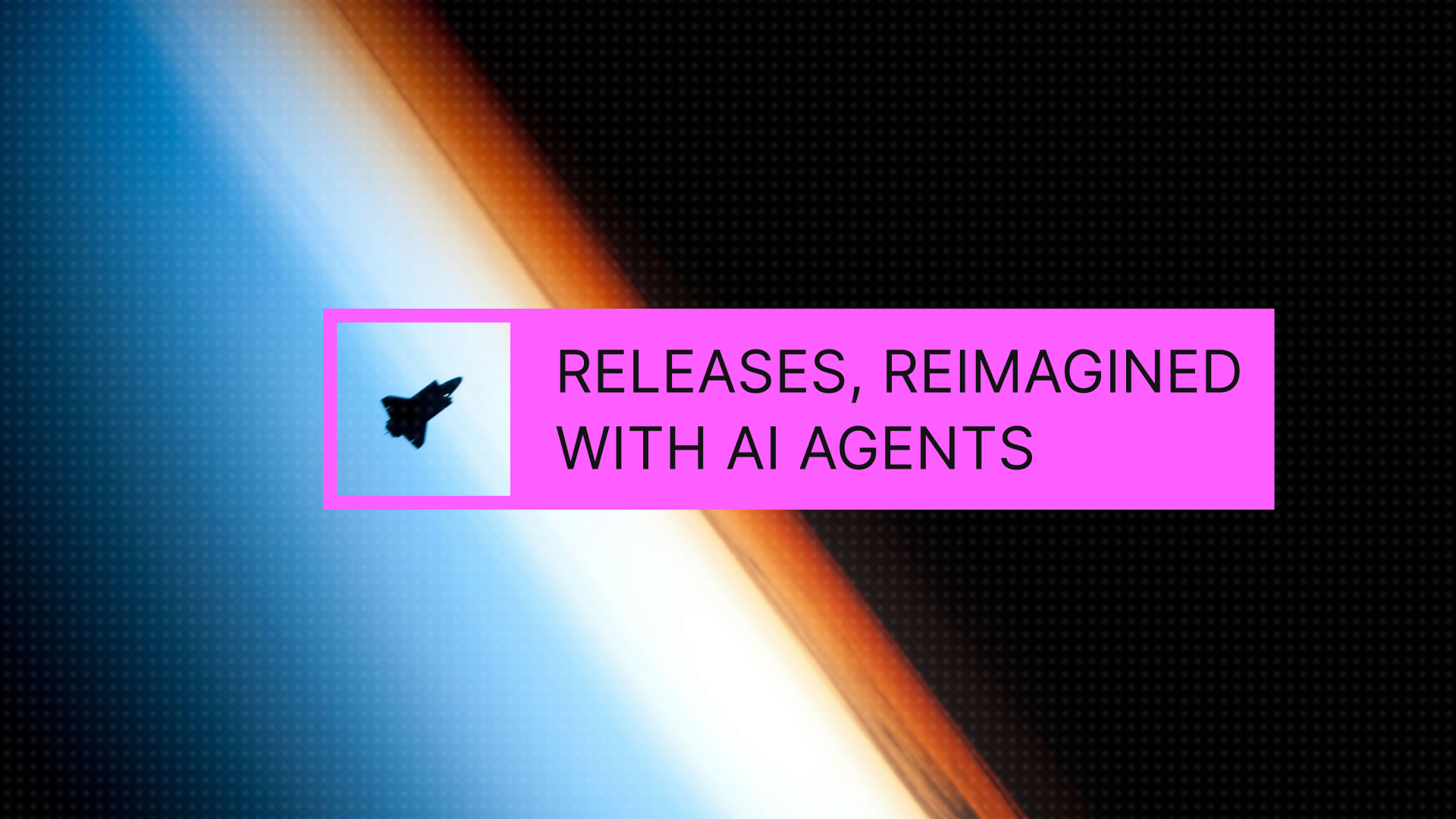Reimagining Software Release Engineering with AI Agentic Workflows

Software releases today demand more than just speed — they demand precision, repeatability, and resilience. Traditional release engineering has long relied on manual oversight and brittle automation scripts. But with the rise of AI agentic workflows, the game is changing. These autonomous, task-oriented agents can learn, reason, and act — transforming how teams plan, test, approve, and roll out software at scale. In this blog, we dive into how AI agents are set to redefine software release engineering — from roles and toolchains to productivity and quality.
The Traditional Release Pipeline Is Showing Its Age
Why the old model struggles to keep up with modern software velocity
- Release processes are highly manual or semi-automated, depending on checklists and DevOps scripts.
- Dependency management, rollout coordination, and rollback planning still require heavy human intervention.
- Release Managers act as gatekeepers, manually validating test reports, reviewing dashboards, and handling edge-case escalations.
- In large-scale systems (microservices, mobile apps, or ML models), coordination complexity explodes with every sprint.
- Result: Slow, risk-prone releases that bottleneck innovation and feedback loops.
Enter AI Agentic Workflows
Autonomous agents that own, coordinate, and execute release-related tasks
- AI agents can reason over CI/CD artifacts, infra metrics, logs, and user events to make context-aware decisions.
- Example: A “Release Readiness Agent” verifies if all gates (test pass %, performance baseline, security scans) are green before promoting to staging.
- Agents operate as independent workers but can also collaborate, e.g., a Test Failure Debugger agent might tag in a Code Owner Notifier.
- These agents aren’t just rule-based; they learn from past releases, adapting to team practices and product patterns.
- Using frameworks like LangGraph, CrewAI, or Autogen, teams can compose these agents into flexible workflows that mirror human coordination.
The New Roles in Release Engineering
From gatekeepers to orchestrators and curators of agent behavior
🔄 The shift is from execution-heavy roles to higher-order coordination, curation, and system thinking.
| Traditional Role | Emerging AI-Driven Role | Description |
|---|---|---|
| Release Manager | Agent Orchestrator | Designs and supervises agent workflows for each release stage. |
| DevOps Engineer | AI Workflow Integrator | Builds connectors between CI/CD tools and agents (e.g., GitHub → LangGraph). |
| QA Lead | Agent Trainer & Prompt Designer | Feeds agents with domain knowledge, test context, and validation criteria. |
| SDET | Agent Feedback Curator | Reviews agent outputs and improves prompts, tools, or memory. |
| Program Manager | Release Flow Analyst | Uses agent logs and metadata to identify delays, patterns, and improvements |
Tool Stack for Agentic Release Engineering
A look at the emerging toolchain enabling agentic workflows
🧠 The key: All tools become agent-readable and controllable, unlocking closed-loop automation.
| Function | Tool(s) | Purpose |
|---|---|---|
| Agent Framework | LangGraph, CrewAI, Autogen | Create and manage multi-agent workflows |
| Observability | Grafana, New Relic, Honeycomb | Agents use these for performance validation |
| Versioning | GitHub, GitLab | Source of truth for code, tags, and changelogs |
| CI/CD Integration | ArgoCD, Harness, Jenkins | Release agents integrate with pipelines |
| Infra as Code | Terraform, Pulumi | Infra-aware agents validate drift or misconfig |
| Artifact Inspection | Snyk, Checkmarx, SBOM analyzers | Validate release safety |
| Communication | Slack, MS Teams | Agents post updates, alerts, and actions |
Benefits of Agentic Release Engineering
How AI transforms software release velocity and reliability
- Faster release cycles: Agents can parallelize readiness checks, post-release verifications, and alert handling — reducing lead time.
- Fewer production bugs: Context-aware agents catch release-blocking issues missed by static rules (e.g., feature flag mismatch or stale config).
- 24/7 availability: Agents don’t sleep. They triage failed canary deployments or hotfix requests even at 3 AM.
- Human-in-the-loop by design: Teams can step in anytime — approve, override, or modify agent decisions.
- Auditability & traceability: Every action is logged with rationale — “this deployment was paused due to spike in memory usage compared to last stable release.”
- Scalable governance: Same agentic framework can be reused across teams, products, and geographies — unlike bespoke scripts.
A Snapshot: Old vs New Release Engineering
Key differences in mindset, tooling, and team dynamics
The shift from traditional to AI-agentic release engineering is more than just a tooling upgrade — it represents a complete transformation in how software is shipped, validated, and governed. Traditional releases rely on human triggers, fixed gates, and manual coordination, often leading to bottlenecks and errors. In contrast, AI-agentic release engineering brings in dynamic decision-making, real-time validation, and autonomous workflows. Here’s a breakdown of the most significant differences:
- Triggering: Traditional releases are initiated manually or through time-based jobs; agentic systems trigger based on real-time conditions and context.
- Coordination: Previously done via meetings or Slack threads; now handled autonomously by agents communicating through orchestrated workflows.
- Validation: Static gates like “all tests pass” evolve into ML-informed gates that factor in historical performance and risk.
- Rollback Decisions: Human-led and reactive before; now agents continuously monitor metrics and can initiate rollback proactively with explainability.
- Human Role: Moves from executors of tasks to overseers and curators who tune, refine, and supervise agent behavior.
- Auditability: Sparse and post-mortem in traditional pipelines; now agents maintain rich, real-time logs with decision rationale.
🧩 Takeaway: Release engineering is shifting from static automation to adaptive intelligence, turning releases into continuous, explainable events.
Conclusion
AI agentic workflows are set to become first-class citizens of software release engineering. As systems grow more complex, static automation will simply not scale. The new wave of AI-native, reasoning-capable agents offers a compelling alternative — one that blends autonomy with oversight, speed with safety.
Now is the time to invest in building agentic fluency — whether you’re a release engineer, developer, or quality lead. Because in the near future, every major release may not just be automated — it will be intelligently orchestrated.